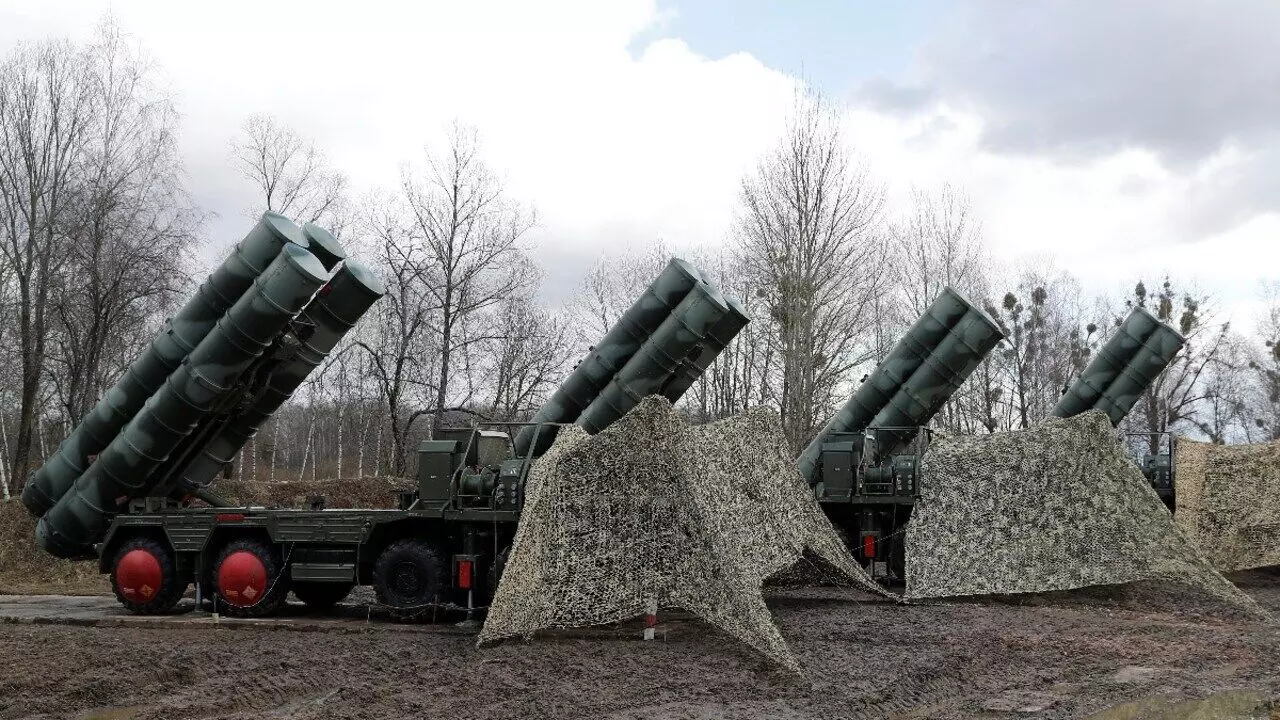TRENDING TAGS :
What is the S-400 Air Defense Shield… That Saved India from 15 Pakistani Attacks
India's S-400 air defense system protected the country from 15 Pakistani attacks after Operation Sindoor. Learn about its powerful capabilities, structure, strategic role, and geopolitical impact.
S-400 Air Defense Shield (PC- Social Media)
Tensions between India and Pakistan have once again reached a peak. In the early hours of Wednesday, under ‘Operation Sindoor’, India targeted and destroyed nine terrorist hideouts in Pakistan and Pakistan-occupied Kashmir (PoK). In retaliation, Pakistan attempted a counterattack, aiming to strike 15 Indian cities using drones and missiles. However, India’s aerial shield—the S-400 air defense system—demonstrated its unmatched capability by neutralizing all the threats mid-air.
Following this episode, there has been widespread national discussion about the S-400 system’s strength and strategic importance. Here’s a closer look at the features of this advanced defense system and how it has become India’s impenetrable shield in the skies:
Operation Sindoor and the Power of Modern Technology
Precision Strike and Counterattack
On May 7, India launched an early morning airstrike, code-named Operation Sindoor, targeting nine terrorist bases in Pakistan and PoK. Over 100 terrorists were eliminated in this operation—a bold message against terrorism. Enraged by this, Pakistan tried to strike back the same night by launching attacks on multiple Indian cities using drones and missiles.
Technology Triumphs in Defense
India’s air defense, especially the S-400 and UAS (Unmanned Aerial Systems) grid, successfully thwarted all these attacks in real-time. It was a triumph of cutting-edge technology.
What is the S-400?
The S-400 ‘Triumf’ (formerly known as S-300 PMU-3) is a long-range surface-to-air missile (SAM) system developed by Russia. It is considered one of the most lethal air defense systems in the world. India purchased five regiments of the S-400 from Russia at a cost of around ₹35,000 crore (approximately $5 billion USD). The deal was signed in 2018, with deliveries beginning in 2021.
How Powerful is It?
- Range: Up to 400 kilometers
- Altitude: Capable of targeting up to 80 kilometers in the sky
- Speed: 4.8 kilometers per second
- Accuracy: Two missiles can be fired at every target with precise guidance systems
- Multi-target tracking: Can simultaneously track up to 160 targets
- Radar range: Capable of detecting threats up to 600 kilometers away
Structure and Working Mechanism
1. Command and Control Unit
The brain of the system. It takes decisions on when and which target to strike once a threat is detected.
2. Surveillance and Tracking Radar
This unit can detect aerial threats up to 600 kilometers away. It uses electronically steered phased array radar as its core.
3. Transporter Erector Launcher (TEL)
These are vehicles responsible for launching the missiles. Each TEL is equipped with four missiles.
4. Multi-layered Missile System
Each regiment contains missiles of different ranges:
- 40 km
- 120 km
- 250 km
- 400 km (India primarily possesses these)
How Does the S-400 Work?
1. Detection
The S-400 surveillance radar identifies potential targets in the sky.
2. Command
The command center evaluates the severity of the threat.
3. Guidance
The guidance radar locks onto the precise location and movement of the target.
4. Launch
A missile is fired from the TEL, reaching and neutralizing the target within seconds. The entire sequence is completed in moments.
Strategic Capabilities of the S-400
Mobile Units
The system can be transported and deployed via road anywhere across the country.
Rapid Deployment
It becomes fully operational in just 10 minutes after receiving an alert.
Undetectable Positioning
The system has no fixed location, making it difficult for enemy forces to locate or target it.
All-weather Operation
Functions effectively even at temperatures as low as -70°C.
India’s Counterstrike on Pakistan’s Defense System
Emboldened by the success of the S-400, India launched another counterstrike on May 8 and destroyed Pakistan’s air defense installation in Lahore. This operation utilized the Harop Drone.
Developed by Israel Aerospace Industries (IAI), the Harop Drone is designed for loitering munition—it hovers over a target area and dives onto the target to explode at the right moment. This suicide drone is extremely effective in neutralizing radars and mobile launchers.
The Diplomatic and Geopolitical Significance of the S-400
India’s acquisition of the S-400 is not just a boost in military power but also a bold diplomatic move. Despite threats of sanctions from the United States under CAATSA (Countering America’s Adversaries Through Sanctions Act), India prioritized its sovereign defense policy.
This purchase is also a reflection of India’s strong defense ties with Russia.
Today, the S-400 is not merely a weapons system—it stands as a symbol of India’s strategic autonomy and technological supremacy. When Pakistan aimed to attack 15 cities, the S-400 destroyed all 15 threats mid-air. It is not just technology—it is an invisible warrior protecting the life of every Indian citizen.
The confidence with which India is safeguarding its borders today is fueled by such advanced systems—and by the valor, vigilance, and sacrifice of its soldiers.


